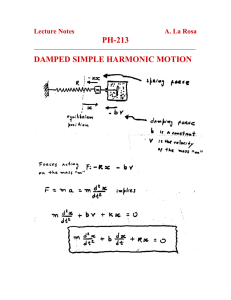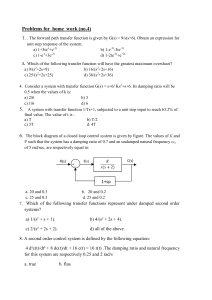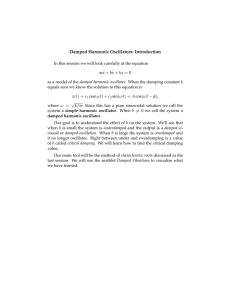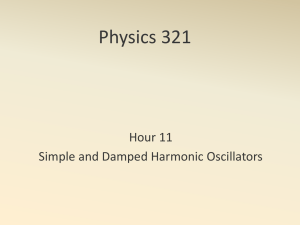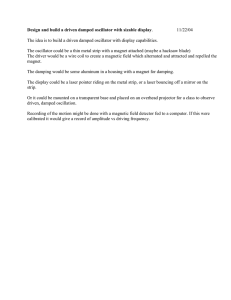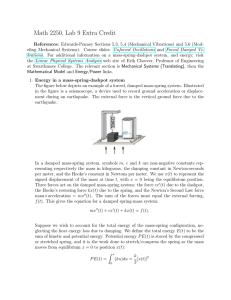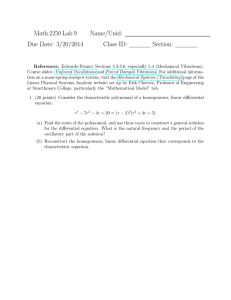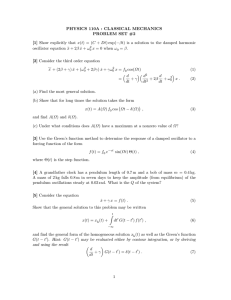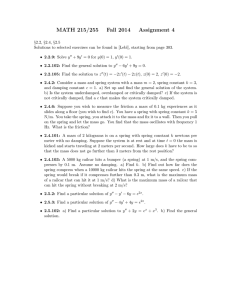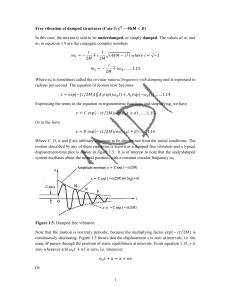1 2 ζ 1.0 ζ 1.0 > ζ t T nT t +
advertisement
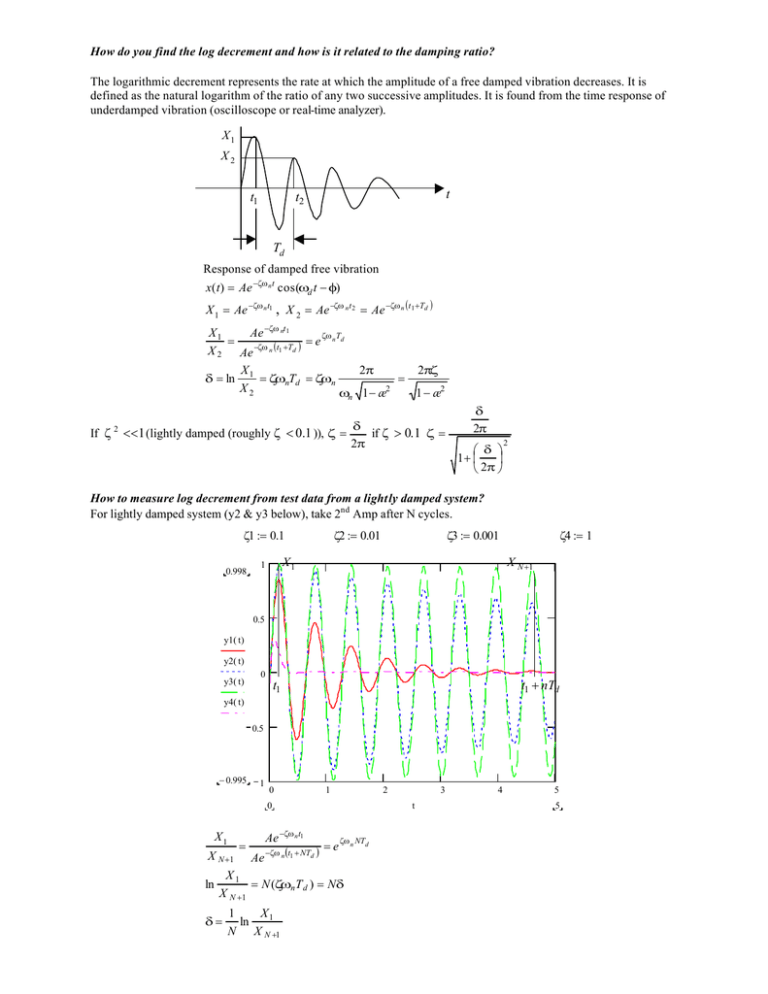
How do you find the log decrement and how is it related to the damping ratio? The logarithmic decrement represents the rate at which the amplitude of a free damped vibration decreases. It is defined as the natural logarithm of the ratio of any two successive amplitudes. It is found from the time response of underdamped vibration (oscilloscope or real-time analyzer). X1 X2 t1 t t2 Td Response of damped free vibration x( t) = Ae −ζω n t cos(ωd t − φ) X 1 = Ae −ζω n t1 , X 2 = Ae −ζω n t 2 = Ae −ζω n (t 1 +Td ) X1 Ae −ζω nt 1 ζω T = =e n d −ζω n ( t1 +Td ) X2 Ae X 2π 2πζ δ = ln 1 = ζωnTd = ζωn = X2 ωn 1 − æ2 1 − æ2 If ζ 2 δ <<1 (lightly damped (roughly ζ < 0.1 )), ζ = if ζ > 0. 1 ζ = 2π δ 2π δ 1+ 2π 2 How to measure log decrement from test data from a lightly damped system? For lightly damped system (y2 & y3 below), take 2nd Amp after N cycles. ζ1 := 0.1 0.998 ζ2 := 0.01 ζ3 := 0.001 X1 1 ζ4 := 1 X N +1 0.5 y1( t) y2( t) y3( t) 0 t1 + nTd t1 y4( t) 0.5 − 0.995 1 0 1 0 X1 X N +1 ln = Ae −ζω n t1 ζω NT =e n d Ae −ζω n (t1 + NTd ) X1 = N (ζωn T d ) = Nδ X N +1 δ= 1 X1 ln N X N +1 2 3 t 4 5 5
